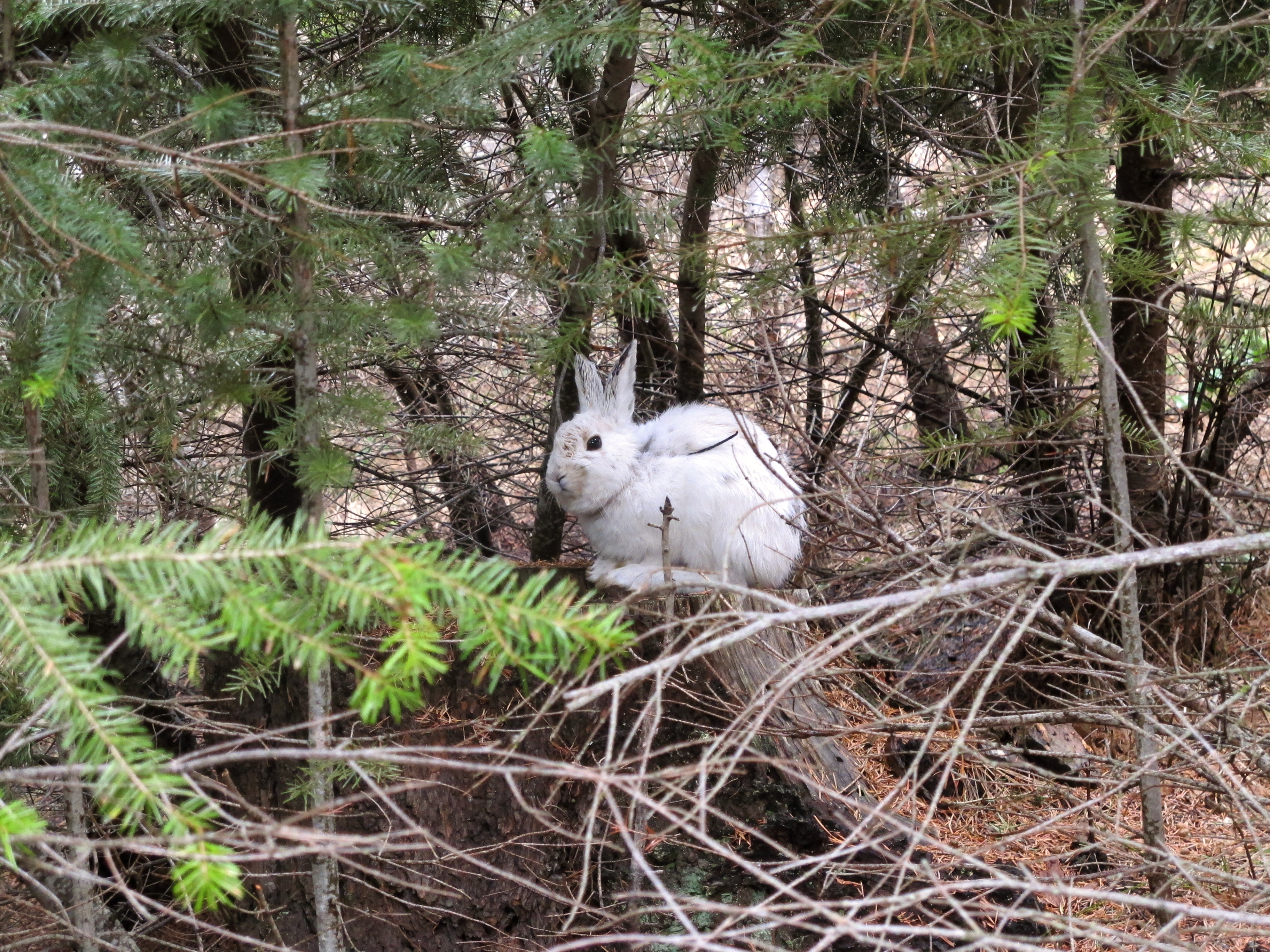When the final snow melts in the springtime, there are always some snowshoe hares that haven’t yet changed their white winter coats to their brown summer ones. That’s lucky for Marketa Zimova, a doctoral student in biology at North Carolina State University who studies the hares in western Montana. The contrast between the bunnies’ fair fur and dark surroundings made them easy to spot, and the hares don’t seem to realize how much they stand out. “They so rely on their camouflage that they stay put,” she says. “You can walk right up to them and look at them.”
It’s also lucky for the hares’ predators, such as bobcats, coyotes, and owls. Zimova and her colleagues are publishing today a study that found that, every week a showshoe hare remains white after its surroundings have turned brown, it’s seven percent more likely to get eaten. Right now, the average hare ends up standing out against its background for less than a week every year. In the future, however, as climate change melts the snow earlier, the hare population may take a hit. In fact, Zimova’s team calculated that, if the world keeps emitting greenhouse gases at a high rate and the hares don’t adapt, they’ll decline by 23 percent by the end of the century.
Over the past couple of decades, scientists have noted several “mis-timings” in nature due to global warming. But Zimova’s study, published in the journal Ecology Letters, is one of the first to show that the mismatch can be deadly. “It’s important to show this mismatch actually matters and it can have these strong demographic consequences,” she says. The hares are a harbinger for a number of other animals. Zimova knows of 16 color-changing species that may be similarly vulnerable, including ptarmigans, weasels, and Arctic foxes.

It’s important to note, even if they were to notice the spring coming earlier, individual hares don’t seem to have the ability to alter their coat-change timing. They also don’t change their behavior; hares seem oblivious to how much they stick out. The only recourse they have for dealing with climate change is literal adaptation—evolution. If the population as a whole evolves to molt earlier in the spring then they may be fine. There seems to be a lot of variation in when individual hares molt, and molt timing seems to be inheritable. Still, for now, it’s uncertain whether snowshoe hares will be able to evolve quickly enough to keep up with climate change.
Meanwhile, what’s a bunny fan to do? One way to help the hares is to support measures that mitigate climate change. Another way is to maintain snowshoe hare habitat so their population remains high. They’ll need a big gene pool to adapt for the future.

Quick Studies is an award-winning series that sheds light on new research and discoveries that change the way we look at the world.





